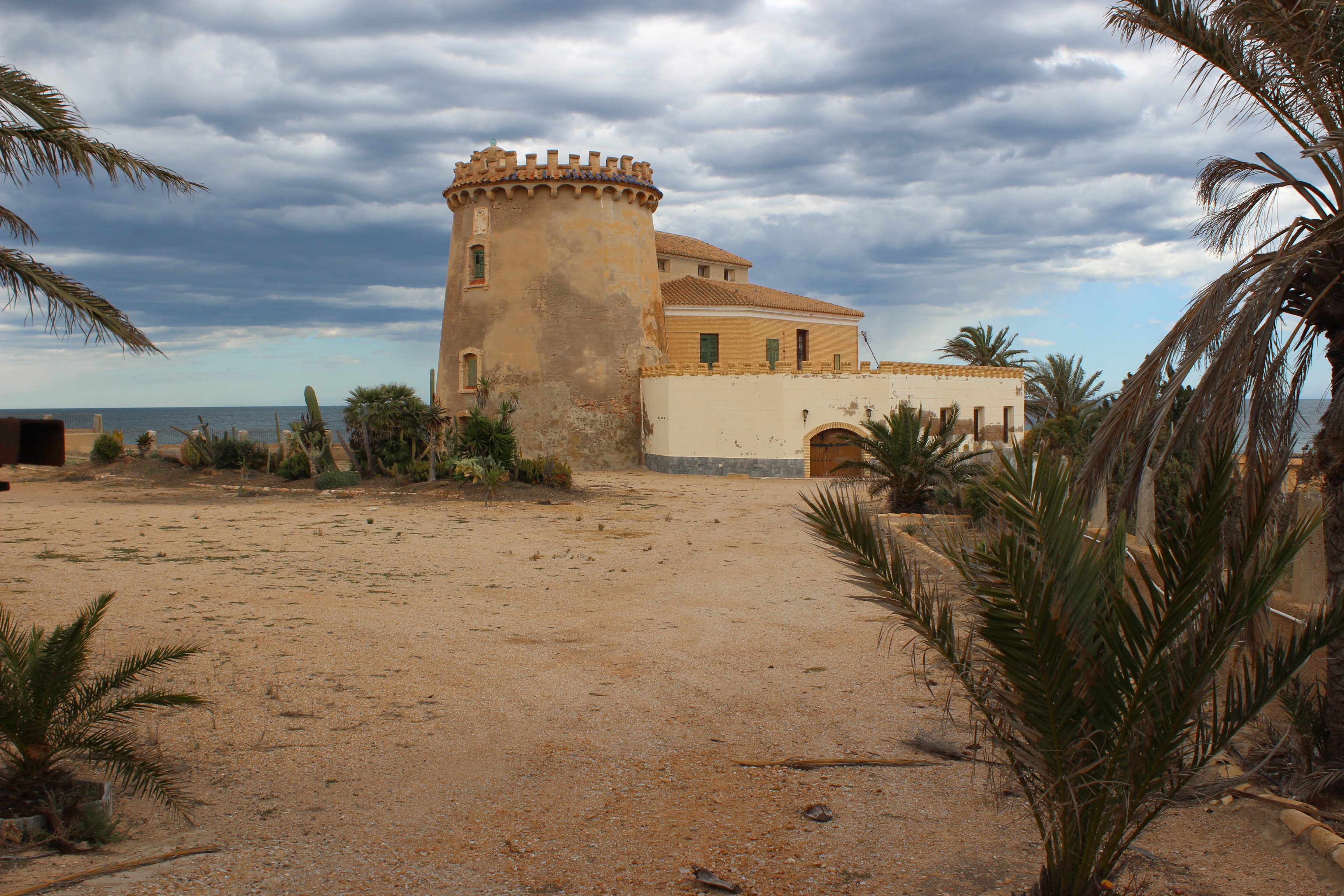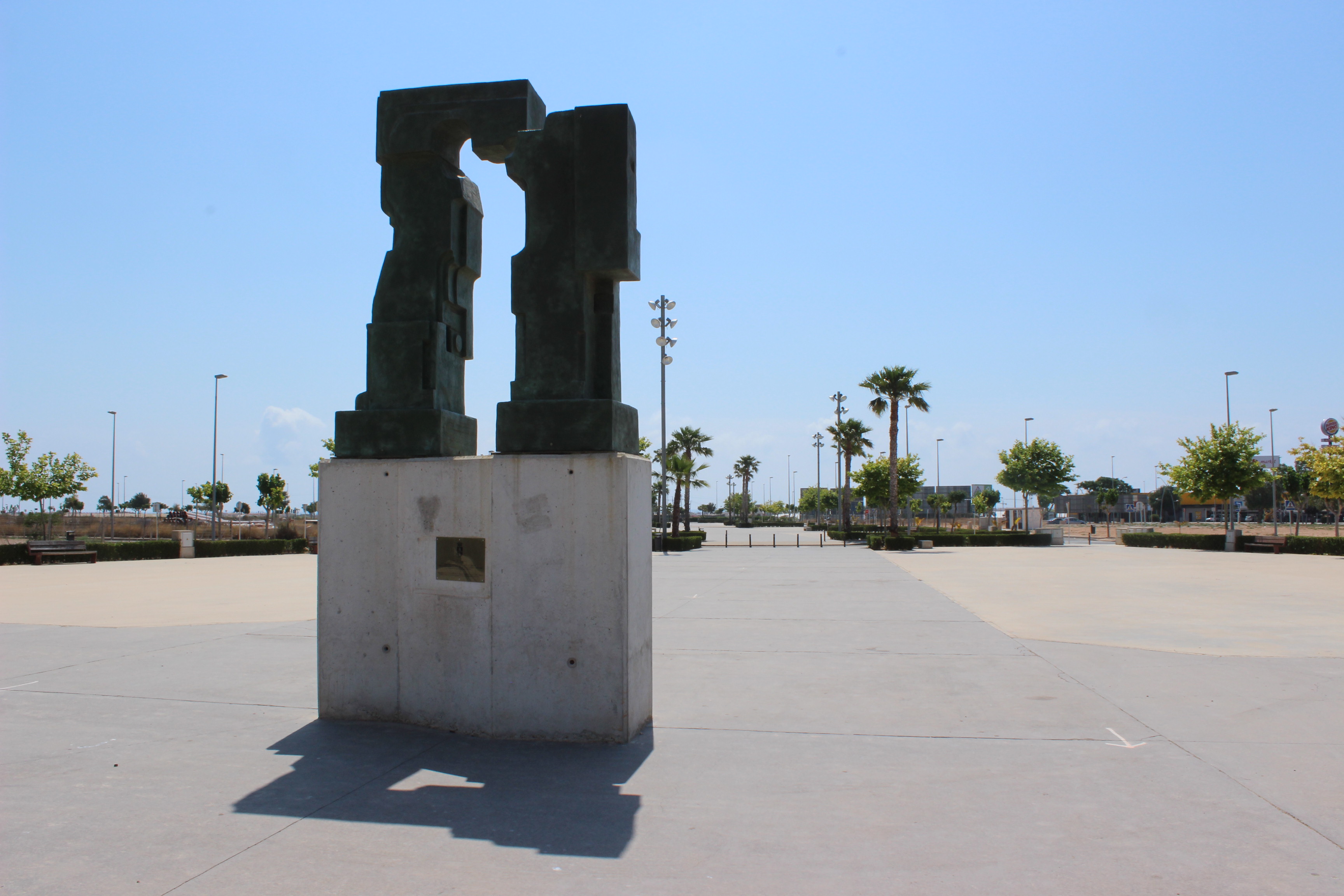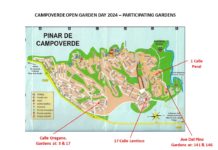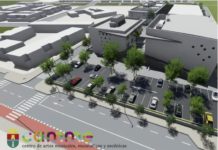The lovely town of Pilar De La Horadada is often referred to as The Drilled One which can be somewhat confusing until you discover that it is named after the Watchtower which has a hollow middle hence the similarity of something which has been drilled.
Like many watchtowers along the coast it was built as a defence to warn against pirates who would land on the shore and carry out their looting in the town. Men on duty in the watchtowers would send signals along the coast if pirate ships were spotted, by starting bonfires, thus warning other towns and villages to be prepared for invasion.

In recent years the tower has been awarded the status of ‘item of cultural interest’ and as such, in accordance with the Law of Valencian Heritage, it must open to the public at least four times a month. But the family that holds the noble title today, the Count of Roche, has so far refused, as a result of which, both its state of preservation and its contents remain a closely guarded secret.
Pilar de La Horadada is the last village in the Alicante area just on the border with Murcia and it is the furthest village to the south in the Vega Baja area. In common with the 26 other villages of the Vega Baja, Pilar has also been under the domination of many different conquerors including Iberian, Roman and Arab and traces of their occupation can still be found together with artefacts which are now housed in the museum.
However, after the Reconquest it marked the border between the kingdoms of Castile and Aragon. The village’s greatest victory however, took place as recently as July 30th 1986 when it gained its independence from Orihuela.

Pilar de la Horadada
Agriculture together with tourism supports the local economy but agriculture led the way in 1970 when the first greenhouses were erected and the village became one of the most developed agricultural areas in south-east Spain. The produce includes Little Gem lettuces, celery and broccoli. However, more specific to the village is the cultivation of flowers such as roses, chrysanthemums and gladiolas.
Pilar De La Horadada is a pretty village and for anyone who enjoys walking there is a walk along the riverbed of the Rio Seco (Dry River) which is about 9 kilometres from the town centre.
During the course of this walk there is the opportunity to see wonderful species of the local flora. Reeds and rushes set in pools of water provide ideal nesting places for the water-birds. Wild orchids, endangered dwarf palms and poppies grow together with the sloe tree, blackthorn, wild olive trees and the herbs rosemary and thyme.
The walk is also a treat for the birdwatcher and animal lover as amongst the fauna to be seen are rabbits, turtledoves, pigeons, squirrels and sometimes snakes or lizards. The Nature Reserve at the end of the round trip is home to bigger birds of prey like Bonelliâ’s eagles, booted eagles and eagle owls as well as wild cats, foxes genets and badgers. However, it is the naturally formed nesting places which provide the real interest for the serious twitcher.
As you travel along the route it is fascinating to see how the effects of water erosion have created beautiful formations on a substratum of compacted sand. A visit to the Tourist Office will provide anyone wishing to make this walk with all the information necessary, the staff is extremely helpful with many speaking English.

Possibly the oldest building is the 14th century watchtower whilst the church has a 19th century bell tower and a sundial set on the tower which gives and provides an accurate record of the passing of time. To fully appreciate the history of the village then a visit to the local museum is not to be missed.
The museum was funded by private donations and first opened in 1994 and the current collections come under the headings of: environment, fossils, archaeology, ethnology and numismatic whilst there is also the opportunity to see the office of Mr Gratiniano Baches who was the first person to begin archaeological studies in Pilar de La Horadada in the early 20th century.
One other notable landmark that, over the years, has become extremely popular with holiday snappers is the the iron sculpture of a bull that is situated on el Rotonda del toro just north of the town, where access is provided from the N-332 to the AP-7.
This massive iron figure is the work of the local artist Pedro Manuel Moya Manú.
It seems that the bull was paraded through the streets of town in 2001 where it participated in the float competition of the festivities del la mano de la peña Rincon del Silencio. The float did not win, generating great controversy amongst the general public, so much so that many people took it out onto the streets again in protest. The bull now continues to be remembered as “the float that paraded twice”.
In order to quell the controversy it was subsequently decided to place the bull in its present localtion and rename the roundabout on which it stands aappropriately.
A commemorative plaque is displayed on the roundabout.
Only 1 km north of the regional border (with the Province of Murcia) the town and its neighbouring villages (Pinar de Campoverde and Torre de la Horadada) are home to thousands of British, German and Northern European expatriates.
San Javier Airport (Murcia) is within close proximity.





